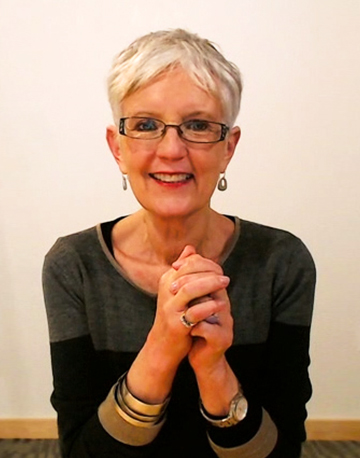How to Identify and Treat Dissociation (Even When It’s Subtle)
 |
with Peter Levine, PhD;
|
 |
with Peter Levine, PhD; Ruth Lanius, MD, PhD; Stephen Porges, PhD; Bessel van der Kolk, MD; Thema Bryant-Davis, PhD; Kathy Steele, MN, CS; Janina Fisher, PhD; Bethany Brand, PhD; Pat Ogden, PhD; Ruth Buczynski, PhD
Sign up for the Gold Package

This is a learning community for practitioners. We can’t wait to hear what you’re going to use with your clients
But please do NOT:
- seek advice for personal problems
- ask for referrals
- post links or advertise a product
- post about technical problems
I will use the two parts the client is experiencing to gradually help them integrate. I very much liked Pat Ogden said about the play with posture. I am an expressive arts therapist and this was very helpful. Much was. Gwen
Thaks you so much, i do really find really useful information that i can use in my practice. Listen to you all guys helps me to be patient with me and with my clients
Importance of grounding techniques for dissociation/DID management. Thank you.
I’ll be more able to recognise DID and dissociation in patients I treat whilst on nursing placement and beyond when I qualify. I now also recognise why my therapy sessions broke down, just too fast for me at the time. Thank you
Thank you I learned a lot from this webinar! Most important one is ” Do not show empathy with the client when sharing his/her emotional distress” Just see it and help them to feel safe!
Understanding what it means when there’s been so much “failed treatment” or years and years of therapy without change… seeing this as structural dissociation that is often misdiagnosed as personality disorders, or when the person doesn’t actually meet criteria for personality d/o, they are just spinning their wheels for so very long. And it shows up as their stuckness and ambivalence now.
One aspect that stands out to me is holding back from over-empathizing – the value of the matter-of-fact. I have sensed this in mock counseling sessions before, but had not learned about it before. Thank you!
Thank you!
Thank you! Now I have a better understanding of DID and I have tools for my practice.
Amazing webinar thanks everyone!
thanks
Best wishes
Leslie Wallace, Scotland, UK
I have clients who have suffered sexual abuse and it was interesting to hear that a warm compassionate tone may be perceived as threatening.
I’m curious if someone can help me understand why “voice hearing” occurs within DID? In what way, if any, is the breain trying to keep the patient safe by creating “voices” and what does this look like? Thank you!
I found this incredibly helpful as I start out on my career as a therapist. This seems to be at the root of a lot of what clients present with, to one degree or another. Thank you.
Watching breathing an eye movements, and recognising parts/thoughts. Thank you.
Main point is to be always cognizant of the patient and how much s/he can tolerate….go slow. Tips for helping the patent self-regulate.
My biggest take away today:
Never ask the client to do something physical without doing it with them, eg. to breathe with them… model sighing.
Thanks!
To help my 12 year old son.
This course is extremely helpful and well done.
Thank you so much!
I have started thinking about wanting to change gender – linked to trauma DID……
I would love you to comment on that.
This was a fascinating session. I’ve never had a client with DID, nor have any of my colleagues. It seemed like it was just the stuff of textbooks. But this session gave me some real insight into the disorder, so if I do encounter it, I might be a bit more prepared. Thank you.
Really great education for me, a pastor. I’m learning so much.
I enjoyed the information on the video about dissociation. I’m currently being trained in EMDR, and while starting to use EMDR, I’ve noticed some of my clients tend to dissociate more than others. This will help me work with them more effectively. Thank you!
thank you, really helpful training
Thank you 🙂
As always, this is brilliant, thank you.
I really want to be paying attention to a client’s dissociative states in session so that we can work through it.
I’ll be more aware of the difference between DID and schizophrenia. excellent
It was good to understand the separation between fragmentation and what I’d been taught about ‘dissociation’ as a whole.
Thank you. I can use all of this.
study more in depth about dissociation and specific characteristics also in comparison with DSM V – personality disorders
Thank you for compiling all that went into session 2.
This information-packed session offered many useful tips and techniques in the recognition and treatment of trauma dissociation.
( I was able to begin utilizing much of the information almost immediately following the program.)
I am encouraged by the recognition of DID vs. personality disorders. As their treatments are very different.
Also, being watchful for the subtle Eye/Breathing/responsiveness changes in one’s body, enables and empowers both the therapist and client by becoming more self-aware of early indication of dissociation and/or pre-switch. Through early recognition, one is more able to ground and remain present.
I believe that the identification of thoughts to parts is also a very useful tool and will be enlightening to track.
Thank you for offering this program free of charge. I can’t wait for next week.😁
This series was just phenomenally educational. The tips on how to use the techniques were easy to follow and so well explained. I like the enthusiasm and the passion of the speakers. Some of the videos I listened to over five times. Unfortunately, I was not able to list to them all. My gratitude for the work you do and sharing your practices with us all.
Thank so much for such a valuable knowledge, I cannot pay gold package, but I wish at least to have an option for a donation. Your work is valuable for me. Please consider next time the option about receiving a donation for such amazing work.
Appreciation from my heart.
I was thinking the same thing!
The idea of having an option to donate is a great one. 😉
This is a most interesting way to detect and dissolve dissociation.
Harry
I am really enjoying the structure of this course, both within each session (having a host linking the interviews sections together), and the sessions building on each other. It was good to hear more discussion on ‘structural dissociation’, as this concept seems to fill some ‘gaps’ in my approaches (though it seemed to lack a clear definition of what was, and wasn’t counted as ‘structural’?). Thank you for sharing all this wisdom with us, so we can help others!
I agree about your opinion of a “lack” of a “clear definition” in regards to structural dissociation.
So interesting that physical symptoms could be a kind of dissociation.
Wow, this is high-class! Thank you so much. I am not a practitioner, so it is interesting to get a perspective on how we are or seem when dissociated. It helps me gain some insight (and courage) into how to choose and see a therapist at last. And how wonderfully sensitive, thoughtful handling of it and kind your speakers are. It is terrifying to dissociate in public, when you can hear through the ‘white noise’ “She goes like this sometimes”. Though I do not think to get up and walk about is a good idea as I have often passed out if I do that.
I wish I could afford the whole package, but is it possible to purchase individual talks?
How to help a person who is not in therapy, who has learned of various trauma states, find an appropriate therapy/modality before they spend hundreds of dollars in the wrong setting?
As a nurse, I especially appreciated the “at the bedside communication and actions” that can be utilized in this session. Curious would be in the acute care setting during and following traumatic experiences. The patient is still in a shock state and emergency treatments must be activated quickly. IV’s, intubation, etc. Of course there is verbal recognition to the patient that their fear is recognized, a gentle touch on an area of the body not treated, co-regulation of breathing together during and after a treatment…is there more?
How to communicate to co-workers, primary and acute care settings where trauma aware care is limited or abscent, especially in todays era of limited resources, both time and man power?
Thank you.
Fascinating to think that physical symptoms could be a way of dissociating.
One new thing I learned today was : Voice hearing, specially if many different ones, can be common in early trauma. Do not mistake it for schizophrenia.
I did not think about itching as a sign of hyperarousal. One client is doing that a lot and this new knowledge will be useful. Thank you for the program.
I wished that each part of this session could have been expanded on. Many helpful tidbits- but definitely tidbits. Found the discussion of normalizing hearing voices helpful. Interesting points about shifting posture to include both parts.
My takeaway is that this is a very broad overview.
I agree with you. It can be frustrating, like having an appetizer without the meal when hungry. I wish there would be a book written with this kind of information more fully presented.
I’m impressed with how body-based/somatic work and “parts” work is present now in trauma treatment. I hope that these approaches continue to have more evidence to show efficacy, so they can be used more widely. In particular, I do not see these approaches able to be used in government funded services for child welfare. Adults and children involved in the child welfare system need the best and most up-to-date trauma treatment, and what they currently can obtain is insufficient. Thank you for offering these workshops for free, so that more professionals can be exposed to these approaches.
Particularly interesting voice hearing is now recognized as Trauma related. Is this finding passed on to all adolescent screening techniques?
As a trauma informed early childhood teacher, the biggest take away for me was thinking about the struggle between the attachment needs and the defense system. How too much empathy, or growing close, can trigger protective parts that fear attachment and pull away. How empathic responses and behaviours may proceed sexual abuse and trigger dissociation. To understand that some children may not find safety in co-regulation through normally adopted social/caregiver type interventions but may become more disregulated. To be aware of these potentials and the signs that attachment-based trauma is showing and move at a slower pace and more matter of fact manner to keep child inside window of tolerance.
Helpful to learn to ask how much of you are with me? How can we make it safe for more of you to be here?
The importance of psycho-education and going slow and checking it verbally and visually with self and the client.
useful info. i like the reminder for me to stay self-regulated first, particularly when client dissociating
Recent breakthroughs in “mind-body” medicine are historic advances in our understanding of human health and behavior. Thank you for bringing together expert researchers and practitioners in this available format.
The persistence of individual and collective trauma suggests an urgent need to develop “upscaled” holistic models of therapeutic community–broadbased, inclusive, multi-cultural.. Designing socially (and ecologically) responsible learning environments–funding them federally for local adaptation and implementation, might yet offer viable, wholesome alternatives to current predatory cultural standards. Is such an effort underway?
Oh my: that was SO packed! I wanted to interview everyone personally.
I am pretty certain I used to be DID….lots of breaks in reality-i.e. dissociative amnesia. There was a photo taken of me
at about age 12 which I did not believe was me at first. That person was not the me I knew. No, I do not recall hearing voices in my head. Yes, ginormous attachment issues.
Here is something you may add or examine in practice which was not mentioned here, probably because it does not happen in the office environs: Fantasy world-what happened there? So, when you dissociated, where did you go…I flew away *just in time*. I literally experienced my essence flying through the dappled shade of the trees in the sunlight….the feeling of slowly lifting up from my body and flying out of reach. Just before liftoff, sick to my stomach.
What about EXPOSURE therapy…where the client has control of how much and how long they can handle it–no one mentions READING books on the subject, watching MOVIES, watching News clips, Documentaries, and #MeToo entries…they helped me a lot, (UNLIKE FLOODING which was horrific humiliation and jack-off disrespect).
This time I particularly liked and identified with Thema Bryant Davis in her focus on minorities and women…dissociation happened to NOT feel, avoid/deny dehumanization, and essentially disappear…because no one authentically believed or cared.
Here is a question to toss in the ring. What would Peter Levine or Pat Ogden do with a client who believes she GROUNDS through her neck? Her neck incidentally is solid like a brick.
I was in a treatment center go CPTSD….after an earlier one got alcohol abuse and flooding emotions and fear of Covid and not feeling safe in my relationship. The first place taught me regulating, tone, pitch , speed 🙏🏻 My husband received help and it worked at the second place I went. My father died while I was in first treatment center, and I was very close to him . The first place was all about childhood Trama which I have now realized having my only sibling be profoundly handicapped was true Trama. And his needs had to come first. Therefore I have always over trusted others and come across as overly friendly. I went to the second place….and having already learned how much I disassociate, and freeze or flood….I was an emotional mess and over medicated. A therapist there abused my trust, my state of mind , my naive mind….and manipulative is not strong enough word….he convinced me I was seen and heard and understood by him, he would say “go get ready for bed”….I see how fragmented I was (I’m still trying to not disregulate) …he raped me…had sex with me…made me bleed….acted normal in the day then at night acted like a parental figure that was abusive…..he knew all about me and my life and he used it against me….I’m so disappointed I couldn’t scream say something…I work hard with my psychologist and psychiatrist to : stabilize myself, regulate Repeat I am safe now from this rapist who did not protect me and instead abused my body mind and soul. My home life is safe now, I have so much support, thank God. I’m trying to grow a relationship that I trust with myself, the psychologist and my husband, the Psychiatrist is a bit harder, medication is a tricky thing I feel unsafe with. But without a doubt recognizing how to regulate my anger, disappointment , anxiety, hurt, sadness is my primary goal. I am too young (55)and have lived through sooooooo much , that this rape while there was no one protecting me, I was alone at the place ( only client) for a week ….can not become my downfall to a spiral of shame, disgust….I have lived through so much but this ultimate betrayal has just become a definition of “me” and that’s just not true think, so
I tell my thoughts let the SVU detective and lawyers do there jobs, and my job is to
Heal somehow from this…all the while still trying to mourn my father dying, I think I stopped processing any of that once I was abused, so although it will be a year this week my daddy died…and I was raped January and February….it’s like I’m just learning how to breathe compassion slowly to hopefully heal as best I can🙏🏻Thank you for listening…and thank you for this amazing series….it is actually very much in forcing what I learned at the first treatment mental health center…I am Worthy…I am Worthy 🙏🏻